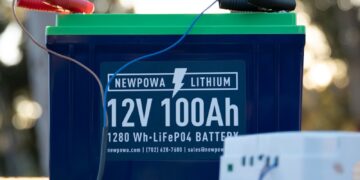Blockchain technology, introduced in 2008 with Bitcoin, has transformed digital transactions through a decentralized, secure ledger. Bitcoin mining, the process of validating transactions via Proof-of-Work (PoW), is computationally intensive, consuming an estimated 67–240 TWh of electricity annually, comparable to the energy use of countries like Argentina (Bitcoin Energy Consumption Index). This high energy demand has sparked debates about environmental impacts and energy sourcing strategies.
Power Purchase Agreements (PPAs) are long-term contracts for purchasing electricity at fixed rates, commonly used for stability in energy-intensive industries. However, Bitcoin miners often avoid PPAs, favoring cheaper, flexible energy sources like curtailed renewable energy. This article explores why miners bypass PPAs, their preference for low-cost curtailed energy, and how hybrid energy solutions—integrating solar, wind, geothermal, Battery Energy Storage Systems (BESS), and generators—offer a path toward sustainable mining.
Understanding Bitcoin Mining and Energy Consumption
Bitcoin mining involves solving complex mathematical puzzles to validate transactions and add them to the blockchain. This process, detailed in Satoshi Nakamoto’s 2008 paper, requires significant computational power, primarily from specialized hardware like ASICs (ScienceDirect). The Cambridge Blockchain Network Sustainability Index estimates Bitcoin’s annual electricity consumption at 120 TWh in 2023, with a range of 67–240 TWh, accounting for 0.2–0.9% of global electricity demand (CBECI).
This energy intensity makes electricity costs a critical factor in mining profitability. Miners often seek regions with low-cost energy, driven by the need to maximize returns in a competitive, price-volatile market. The environmental impact, including carbon emissions estimated at 300–400 kg of CO₂ per Bitcoin transaction, has fueled criticism and pushed the industry toward sustainable practices (CarbonCredits).
Why Bitcoin Miners Avoid PPAs
PPAs are contracts where buyers commit to purchasing electricity at a fixed price over an extended period, typically 10–20 years. While PPAs provide price stability, Bitcoin miners often find them unsuitable for several reasons:
- Need for Flexibility: Bitcoin’s price volatility and rapid advancements in mining hardware require miners to adapt quickly. PPAs, with their long-term commitments, limit the ability to scale operations or relocate to regions with cheaper energy. For instance, miners may move to areas with surplus renewable energy to capitalize on low costs, which fixed PPAs cannot accommodate.
- Cost Optimization: Profit margins in mining are heavily influenced by electricity costs. PPAs may lock miners into rates higher than those available from alternative sources, such as curtailed renewable energy. Research indicates miners spend a significant portion of their revenue on electricity, making cost minimization critical (RMI).
- Preference for Non-Grid Energy: Miners often prefer off-grid or surplus energy sources, such as curtailed renewable energy, which are not typically available through PPAs tied to traditional grid power. This allows miners to access cheaper or free energy, enhancing profitability.
| Reason for Avoiding PPAs | Explanation |
|---|---|
| Flexibility Needs | Volatile Bitcoin prices and hardware advancements require operational agility. |
| Cost Optimization | Miners prioritize the lowest-cost energy to maximize profits. |
| Non-Grid Energy Preference | Curtailed renewable energy offers cheaper alternatives not available via PPAs. |
Preference for Cheap and Curtailed Energy
Bitcoin miners gravitate toward regions with inexpensive electricity, particularly areas with surplus renewable energy. Curtailed energy—excess power from solar or wind farms that exceeds grid demand—is often sold at a loss or wasted. Miners can use this energy at minimal or no cost, significantly reducing operational expenses.
For example, in West Texas, a solar plant partnered with a mining operation to convert excess energy into Bitcoin, avoiding losses from selling surplus power at negative prices (CoinDesk). Similarly, wind farms in regions with high renewable penetration provide miners with low-cost energy during peak production. This strategy not only boosts profitability but also supports grid stability by utilizing energy that would otherwise be curtailed.
The preference for curtailed energy aligns with miners’ ability to rapidly adjust operations. Unlike data centers requiring constant uptime, Bitcoin mines can be turned on or off quickly, making them ideal for consuming variable renewable energy (CoinDesk).
Hybrid Energy Solutions for Bitcoin Mining
To address both cost and environmental concerns, Bitcoin miners are increasingly adopting hybrid energy solutions that combine multiple energy sources and storage systems. These solutions reduce reliance on traditional grids, lower costs, and enhance sustainability. Key components include:
- Solar and Wind Power: Renewable sources like solar and wind are cost-effective and environmentally friendly. Companies like Prismecs offer tailored solar power systems for mining, reducing energy costs and improving efficiency (Prismecs). Wind power, particularly in high-wind regions, provides a stable, low-cost energy source.
- Battery Energy Storage Systems (BESS): BESS store excess renewable energy for use during low-generation periods, addressing the intermittency of solar and wind. This ensures a consistent power supply for mining operations.
- Natural Gas Generators: In regions with abundant natural gas, generators serve as a reliable backup or primary source, especially when renewable energy is unavailable. USPE Global integrates gas turbines into hybrid systems to optimize costs (USPE Global).
- Geothermal Energy: Geothermal provides a stable, renewable energy source for mining. RenewaBit uses closed-loop geothermal technology to power data centers, requiring minimal land and infrastructure (PowerMag).
- Green Hydrogen: Emerging research suggests pairing mining with green hydrogen production can enhance renewable energy deployment, further reducing carbon footprints (ScienceDaily).
| Hybrid Energy Component | Benefits | Examples |
|---|---|---|
| Solar Power | Cost-effective, reduces grid reliance | Prismecs solar systems |
| Wind Power | Low-cost in high-wind regions | Wind farm partnerships |
| BESS | Stores excess energy, ensures stability | Integrated with renewables |
| Natural Gas Generators | Reliable backup for intermittent renewables | USPE Global hybrid stations |
| Geothermal Energy | Stable, sustainable power source | RenewaBit geothermal solutions |
| Green Hydrogen | Enhances renewable deployment | Cornell University research |
Case Studies
- West Texas Solar Partnership: A solar plant, operated by a major energy company, uses excess energy for Bitcoin mining, converting potential losses into revenue. This model demonstrates how miners can monetize curtailed energy, supporting renewable project financing (CoinDesk).
- Geothermal-Powered Mining: RenewaBit leverages geothermal energy from oil and gas wells to power mining data centers. This approach uses minimal space (400 square feet per MW) and supports green energy growth (PowerMag).
- Hybrid Power Stations: USPE Global designs hybrid power stations integrating solar, wind, gas, and BESS, optimized with AI-driven software to monitor costs and profitability (USPE Global).
Environmental and Economic Impacts
Hybrid energy solutions offer dual benefits:
- Economic: By using curtailed energy and renewables, miners reduce costs, with some estimates suggesting electricity accounts for a majority of mining expenses (RMI). Hybrid systems further optimize returns by combining low-cost renewables with reliable backups.
- Environmental: Shifting to renewables and green hydrogen reduces the carbon footprint of mining, addressing criticisms of its environmental impact. For instance, a single Bitcoin transaction emits 300–400 kg of CO₂, but renewable-powered mining can mitigate this (CarbonCredits).
However, challenges remain. The transition to cleaner energy is not yet sufficient to fully offset mining’s environmental impact, particularly in regions reliant on fossil fuels (Nature). Continued innovation and investment in hybrid systems are crucial.
Future Outlook
As global demand for sustainable energy grows, Bitcoin mining could play a pivotal role in energy markets. By consuming curtailed energy, miners support renewable energy projects, potentially reducing reliance on government subsidies. Research suggests mining profits can fund energy transitions, aligning with Sustainable Development Goals (ScienceDirect). The industry’s ability to adopt hybrid solutions will determine its contribution to a sustainable future.
Conclusion
Bitcoin mining’s energy-intensive nature has drawn scrutiny, but strategic energy sourcing offers solutions. By avoiding PPAs, miners maintain flexibility to access cheap, curtailed energy, enhancing profitability. Hybrid energy systems, combining solar, wind, geothermal, BESS, and generators, provide a sustainable path forward, reducing environmental impact while maintaining economic viability. As the industry evolves, its integration with renewable energy could transform Bitcoin mining into a catalyst for global energy innovation.
Key Citations
- Bitcoin mining: A global review of energy and power demand
- Crypto Mining with Solar Panels and Renewable Energy
- Crypto Mining Power Solutions
- Well-Constructed Solution: Geothermal to Power Bitcoin Mining
- Bitcoin Mining Startup Promises Free Money to Renewable Energy Companies
- Bitcoin Energy Consumption Index
- Cambridge Blockchain Network Sustainability Index
- The Energy Debate: Bitcoin Mining and Carbon Emissions
- Cryptocurrency’s Energy Consumption Problem
- Environmental Effects of Bitcoin Mining on Energy and Water
- Bitcoin Mining Empowers Energy Transition in the US
- Pairing Crypto Mining with Green Hydrogen



















